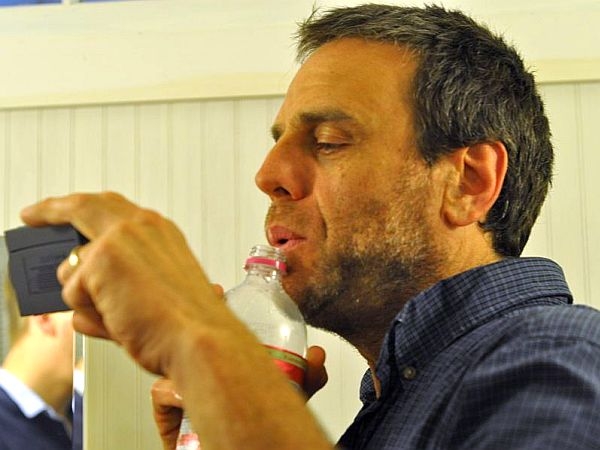
In the 19th and early 20th centuries, Brattleboro was home to the world’s largest maker of organs for churches, homes and public buildings: the Estey Organ Company. Estey helped set an international standard for tuning musical instruments.
And an unusual event celebrates Estey’s historic role.
Estey Organ Museum founder Ned Phoenix stands before a small audience in the museum’s main exhibit space. All around are antique organs from different eras.
He invites people to sit at the organs and play an A major chord.
The resulting dissonance is because not all the organs are tuned to precisely the same A. Which brings him to the reason for today’s event.
"We’re here for the second annual Levi Fuller A-435 extravaganza!"
Levi Fuller was an Estey executive who was also the governor of Vermont in the 1890s. He’s credited with establishing A-435 as the first international standard pitch.
Phoenix explains that A-435 refers to frequency, or the number of oscillations per second in the sound wave for a particular note. In this case it’s A, the note that orchestras use to tune their instruments.
Before Levi Fuller established the A-435 standard, Phoenix says, if a town had an organ, local musicians would tune to that organ.
"Somebody in the next town made flutes. And they tuned all the fiddles and all the flutes to that flute. But when this guy took his flute to the neighboring town to play a wedding with that organ, he wouldn’t be in tune with it, because we had a different pitch in every town."
Phoenix introduces Dennis Waring. He’s is an ethno-musicologist and instrument maker who wrote a book on Estey Organs. He says Fuller married into the Estey family and put the company on the map.
"He was also very interested in railroads, i-e, getting the organs out of Vermont and into the world."
Thousands of Estey Organs were shipped all over the world. Waring says Fuller naturally wanted those organs to be in tune with musical instruments everywhere.
"He worked with William Steinway in a group of interested manufacturers and he went around the world interviewing orchestral conductors, major artists, teachers and so forth."
In1891 at a conference in France, A-435 was declared the international standard.
It didn’t last long. Orchestras started tuning to a higher pitch, A-440, in the 1930s.
Phoenix says some modern orchestras now tune even higher, to A-442. He says it could be evidence of a more frenetic world, in which even musical notes are vibrating faster.
The object of today’s event is to ‘tune’ some common objects — soda bottles, sticks — until they resonate at A 435.
Then the group will head to Fuller’s grave, in a nearby cemetery, to celebrate his musical innovation. But first they have to tune up.
One man from the audience blows across the mouth of a bottle that’s partly filled with water. As he adds more water, the pitch becomes higher…
"You got it?"
" "G sharp"
"Just a little bit more, you’re so close."
Ron Schneiderman, another member of the audience, stands nearby, measuring the sound with a digital tuning device.
Dennis Waring strikes the outside of a glass bottle and pours water out to achieve a higher pitch.
"All right, leave it right there."
"I think we ought to cut it off."
People tune wooden sticks, raising the pitch higher by shortening the stick.
Soon it’s time to go. Phoenix wants to start playing at Levi Fuller’s grave at exactly 4:35.
He packs up a small folding organ, of the sort once used by missionaries and itinerant musicians. Waring brings his flute, and leads the way to Brattleboro’s Morningside Cemetery.
Fuller’s grave is marked by a towering granite obelisk. When Phoenix gives the note, the participants circle around it, playing their own versions of A-435.
The parade doesn’t last long — only four minutes and thirty-five seconds. But Phoenix says the concept behind it is a good one to understand.
And he doesn’t want the world to forget Brattleboro’s role in keeping the world in tune.
Note: The Estey Museum is hosting a series of hands- on musical workshops — including one this Saturday participants on making a rawhide drum.